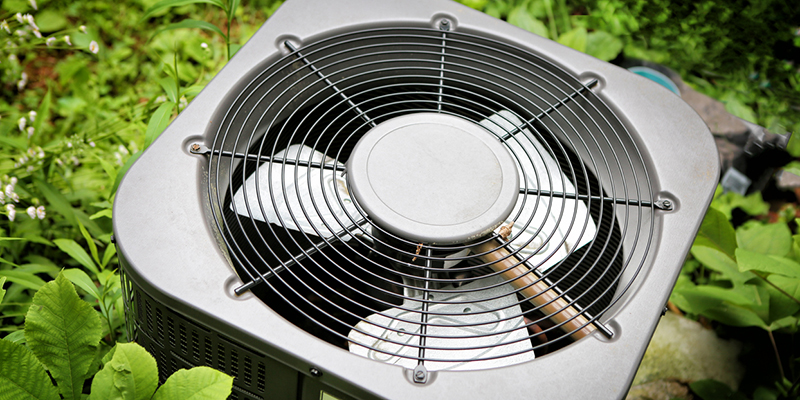
More often than you might think, our techs show up to repair AC systems only to find that they can’t really help.
This usually happens for one of two reasons: Either the problem we’re called to fix isn’t really a problem, so our help is unnecessary, or the unit isn’t in a state where repairs are possible, so we have to come back at a later date.
These calls are frustrating for everyone, so today, we want to help you avoid them with a to-the-point AC troubleshooting guide. If you follow these steps when you have an AC issue, you can avoid wasted service calls – and potentially get your AC back up and running quicker.
Here’s what to do.
1. If your AC isn’t working, check to make sure it’s actually on.
During the late spring, it’s common to switch back and forth between cooling and heating modes to account for changes in temperature. Make sure your thermostat is set to the correct mode before you call for help.
Additionally, you may want to check your breakers and safety switches, too. If a breaker gets flipped or your safety switch is in the “off” position, your unit won’t run – but that obviously doesn’t mean it’s broken.
If you’ve checked that all of your settings are correct, then move on to the next step.
2. If it’s on and it’s not working, turn it off.
If your AC settings are correct and your system stops working – meaning it’s not blowing cold air, or it’s making a strange noise, or it simply isn’t starting – the first thing you should do is turn it off.
Many people are inclined to keep their unit switched on in the hope that it will power through its problem. Unfortunately, this almost never happens. Instead, what usually happens is that the issue gets worse. When an AC unit isn’t working, some component is often frozen or overheated, and continuing to run the unit only causes the component that’s broken to freeze or heat more.
The result of this is that, when a technician arrives at your home to fix the issue, they may be unable to work with your unit, because they’ll need to let the motor cool down or the coil unfreeze before they can see what’s going on.
So, when you have an AC issue, turn your unit off. You can still run your fan if you’d like, but don’t force your cooling systems to keep running when they’re broken.
This will allow you to get your unit fixed faster.
2. Check your air filter.
The next thing you should do is check your air filter.
Air filters are some of the most common culprits behind AC issues. They’re meant to remove particles from the air that passes through your systems – but when they get full, they can restrict air flow and cause components to malfunction. To prevent that, they should be changed every 60 to 90 days.
So, before you call an HVAC technician out to check your system, check to make sure that your air filter isn’t packed with dust and dirt. If it is packed, replace it, then try running your system again. Often, this fixes the problem.
If it doesn’t – or if your air filter isn’t very dirty – there’s a chance your unit may have larger issues.
3. Check your drain.
The next component of your system to check is your drain. Many AC systems include a drain safety; when your pan or trap fills with water, the safety is triggered, and the system shuts down so that water doesn’t continue leaking and cause damage to your home.
If your pan or trap is accessible, check to see if it’s filled with water. If you can, remove the water (shop vacs work well for this), and see if you can identify why the drain is clogging. If you can remove the clog, there’s a good chance you’ll be able to run your AC without issue.
If you get rid of the water but it floods again when you run your system, you’ll likely need to call a technician out to clear your drain line.
4. Reset your breakers.
Finally, sometimes AC units stop running because a lockout is triggered. This is most common in newer units; if they detect electrical abnormalities, they may simply shut down.
It’s not especially common, but sometimes these lockouts are the result of issues on your electrical grid, not issues in your AC unit. If it’s a hot day and your whole block is blasting AC, there may be a surge that triggers a shutdown.
To check if this is the case, you can reset your breakers to clear the lockout. If your system runs normally after the reset, you’re probably okay. But if the system triggers another lockout, the issue is probably internal, and you’ll want to schedule service.
5. Give us a call.
If you’ve gone through each of the steps listed above and haven’t been able to identify your AC issue, give us a call.
When you reach us, we’ll talk through what you’re experiencing, and let you know if there’s anything you need to prepare for service (like turning off your unit so that techs can access it when they arrive).
If you have a service contract with us, we guarantee that we’ll be onsite within 24 hours. If you don’t have a contract, we’ll still do our best to deliver quick service, but you may need to wait a little longer, depending on our service schedule. (This year, the longest delay we’ve had from call to service has been three days.)
Once they arrive, our expert techs will diagnose your issue and get your AC fixed as quickly as possible. Note that, if you do require service, we’re almost always able to perform maintenance onsite as well, so you won’t need to schedule another maintenance checkup until next season.
Having AC issues?
Go through the steps above, and they’ll help you as you troubleshoot your AC systems this summer. At Rod Miller, our goal, as always, is to keep your home as safe and comfortable as possible.
And if you have questions or need service, you can always trust your home to us.


